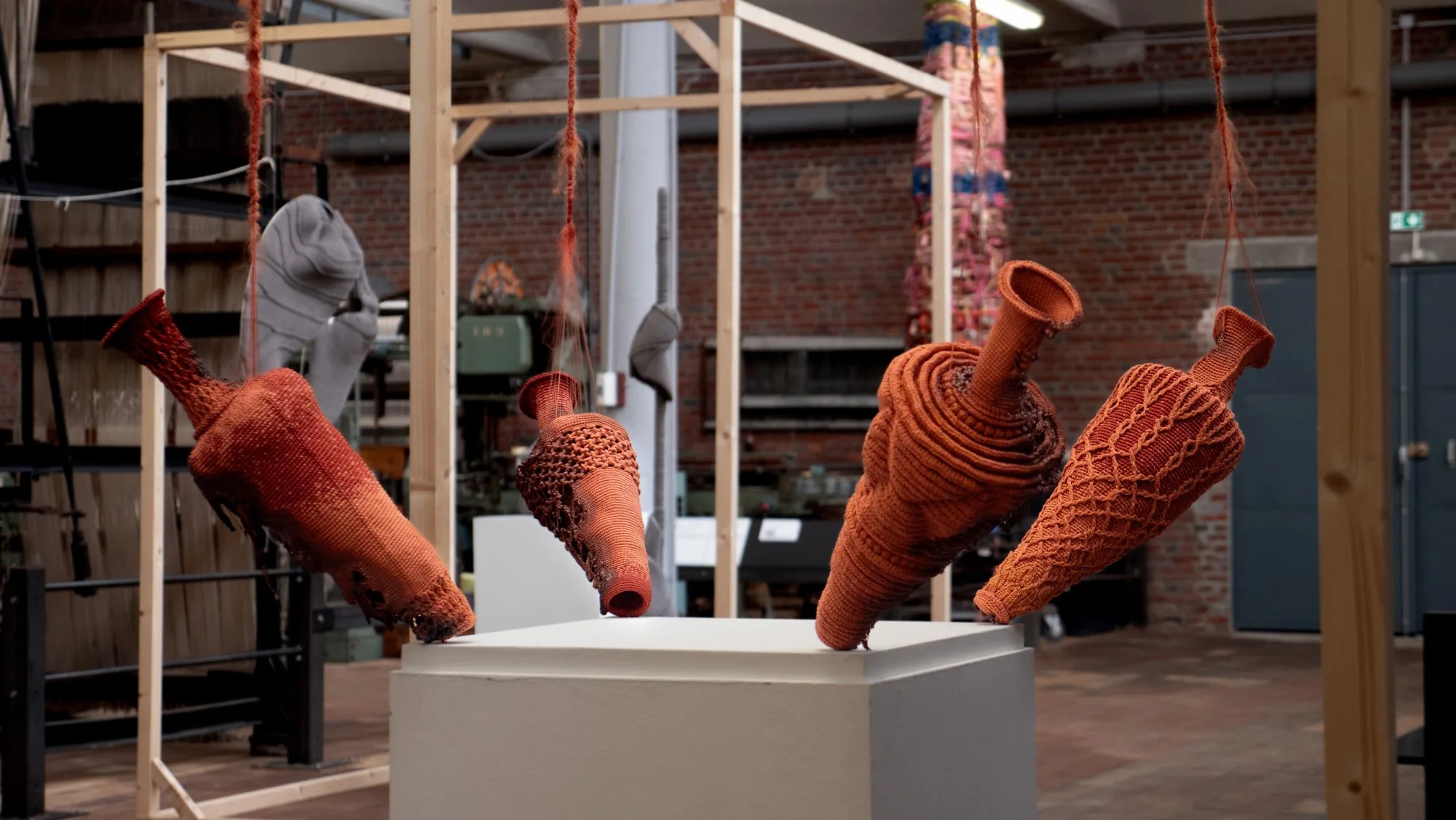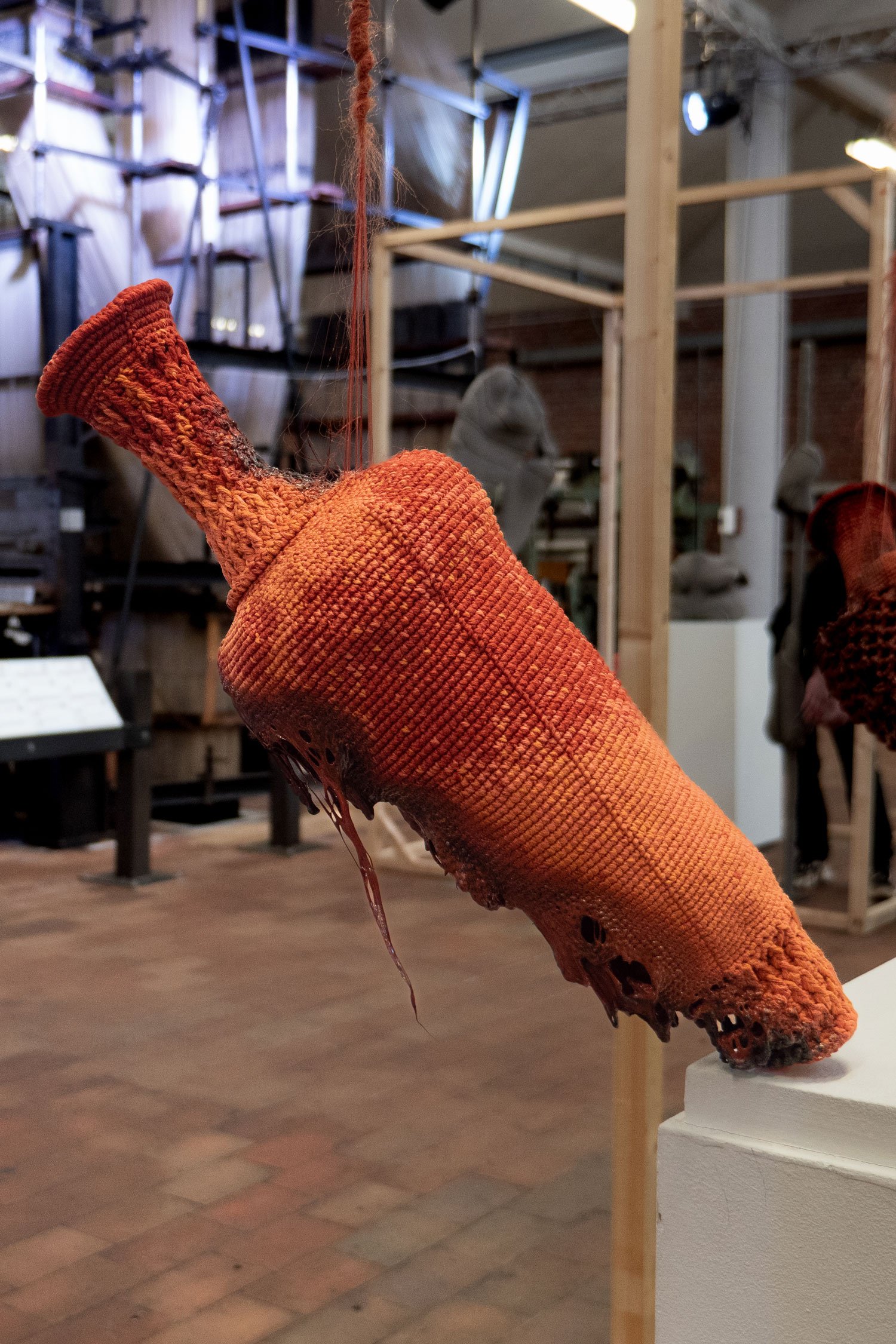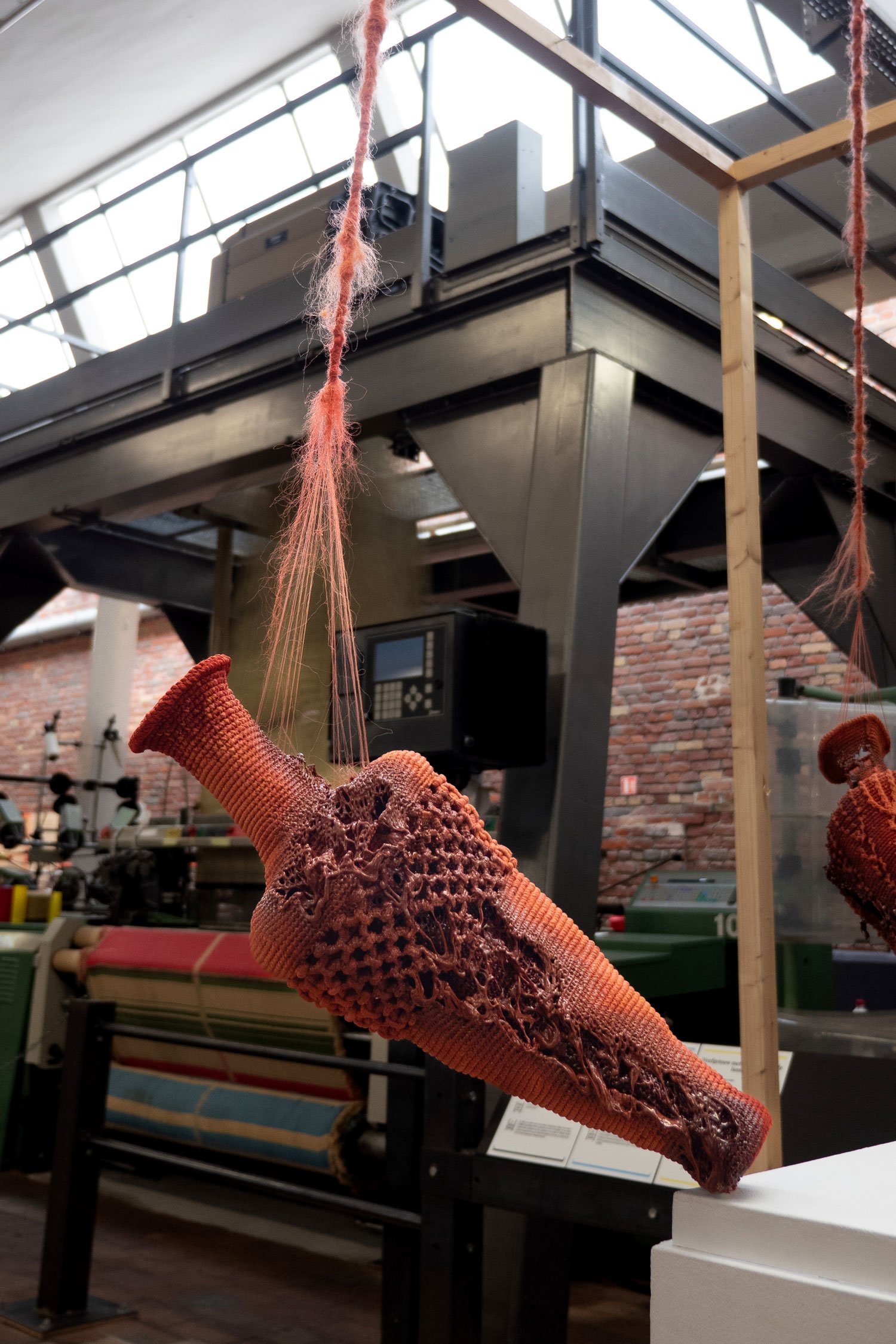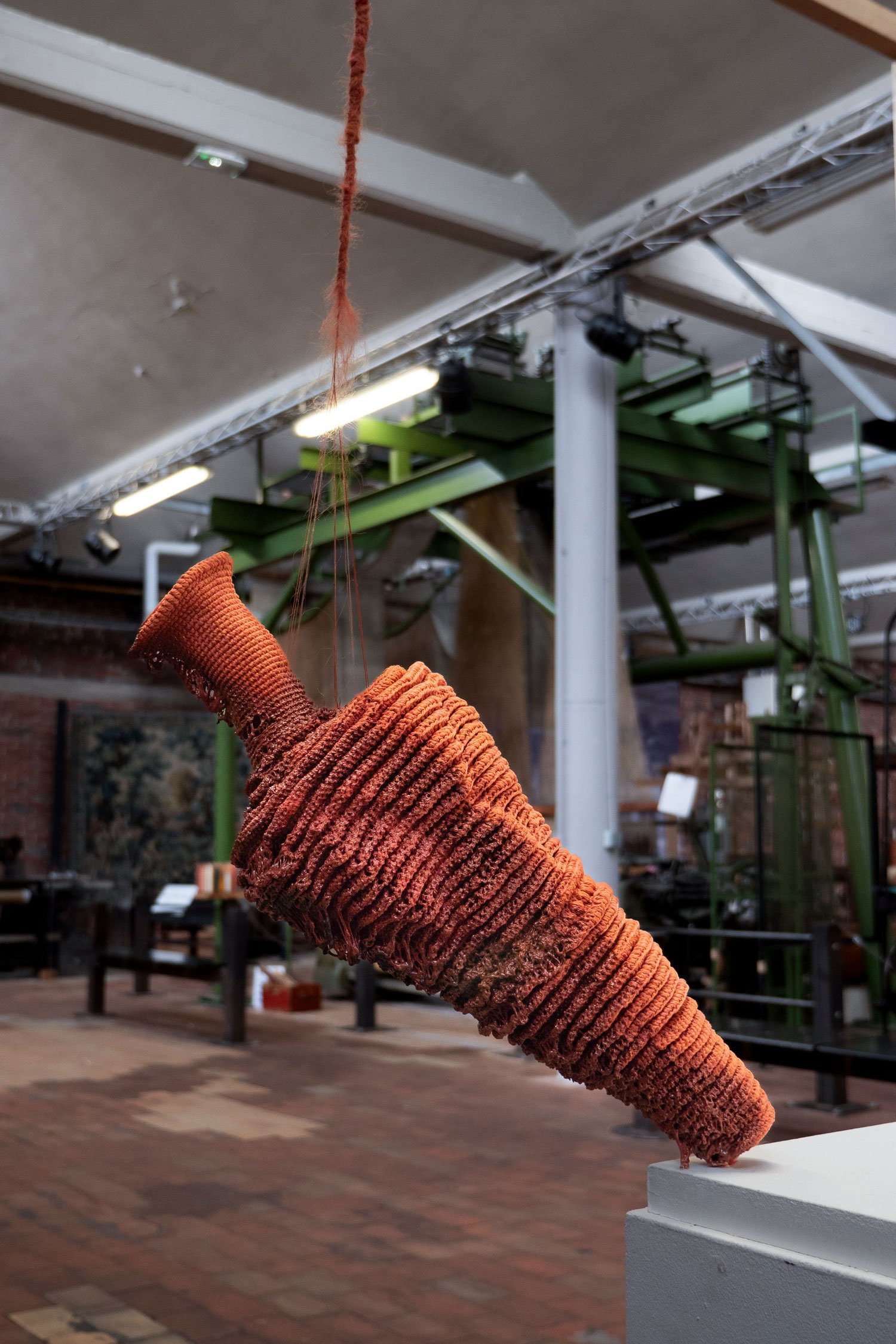This installation entitled Qiān Jīn (千金) is made up of 4 vases of crocheted and melted nylon. It was created as 1 of the 23 installations selected out of over 200 applicants for the #4 Objet Textile Biennale at La Manufacture Museum in Roubaix, France, from 10 February to 31 March 2024.
La Manufacture organise la quatrième édition de la biennale Objet Textile, temps fort de sa programmation autour de l’art textile contemporain.
25 artistes locaux, nationaux et internationaux sélectionnés par un jury de professionnels, sont invités à présenter leur travail dans des modules individuels de 10m3, vitrine de leur univers singulier.
Une exposition qui témoigne de la richesse et de la diversité de la création textile contemporaine. Dépassant les limites de la salle d’exposition, les installations artistiques présentées au cœur de la salle des machines se mêlent au patrimoine industriel.
Cette 4ème édition de la biennale Objet Textile présente 23 installations, réponses artistiques textiles et polyphoniques à une thématique commune : le monochrome.
Si pour des artistes, le travail de la couleur unique est déjà un procédé connu et inhérent à leurs démarches, pour d’autres la contrainte est l’occasion d’une expérimentation. La réduction à une couleur – ou la tentative du monochrome, loin d’être une réduction de la pratique artistique, devient alors une poursuite ou un renouvellement.
Par définition opposée au polychrome, la couleur unique dans l’art revêt d’innombrables formes et nuances. Tantôt interrogée, tantôt porteuse de symbole, objet de dérision ou encore spirituelle, la couleur se nuance, s’oppose, se contredit même parfois. Elle est sujette à tous les possibles.
Following the ‘Monochrome’ theme, the vases are presented in a colour inspired by the ‘peach-bloom’ glaze— considerably one of the most delicate in Chinese ceramic art of the late Kangxi period— to highlight their precious elegance. Taking inspiration from ceramic glazes, the ‘monochrome’ colour is revealed to contain several hues of red, pink and orange within. This was done by randomly alternating solid colours of yarn so they create a gradient effect when viewed from afar, and appear different depending on the lighting.
The shape of these vases are based on the ‘liuye zun’— Chinese for ‘willow leaf vase’— which originated in the Kangxi Reign (1662–1722 AD) of the Qing Dynasty in ancient China, and named for their unique shape. They were known to be so elegant and slim at the base that they required specially-made holders so they would not fall over. This ‘troublesome’ feature seemed to highlight their value even more as they required special care, reminding one of the women in late imperial China and their ‘lotus feet’. Foot-binding was considered a symbol of beauty and even a mark of status, as it symbolised that the woman was ‘blessed’ with a good life and did not need to walk. The disproportionately small feet— like the small base of the willow leaf vase— meant that the woman lost her freedom.
The title of this work Qiān Jīn 千金 (often used in the phrase 千金小姐) usually refers to the blessed young mistress of a wealthy family. Yet colloquially, it could also refer to a girl who has been spoiled. Much of my recent work highlights the duality behind certain terms and how negative or positive connotations are relative.
These 4 crocheted vessels are presented 'falling' off the pedestal, saved only by strands of hair. Hair to me is a strong symbol of femininity, our fragile 'armour' that protects us not with its strength but its preciousness. Being a woman blesses us with certain qualities and power, yet our gender has limited us through periods of history. Often, the idea of enhancing female charm (cosmetics, corsets, etc.) also traps and limits us. Thus this hair saves these vases from falling, yet simultaneously chokes them like a noose.
Vases
Set-up for installation at La Manufacture Museum. Video and edit by Victoria Moey (@plate.to.paper)











